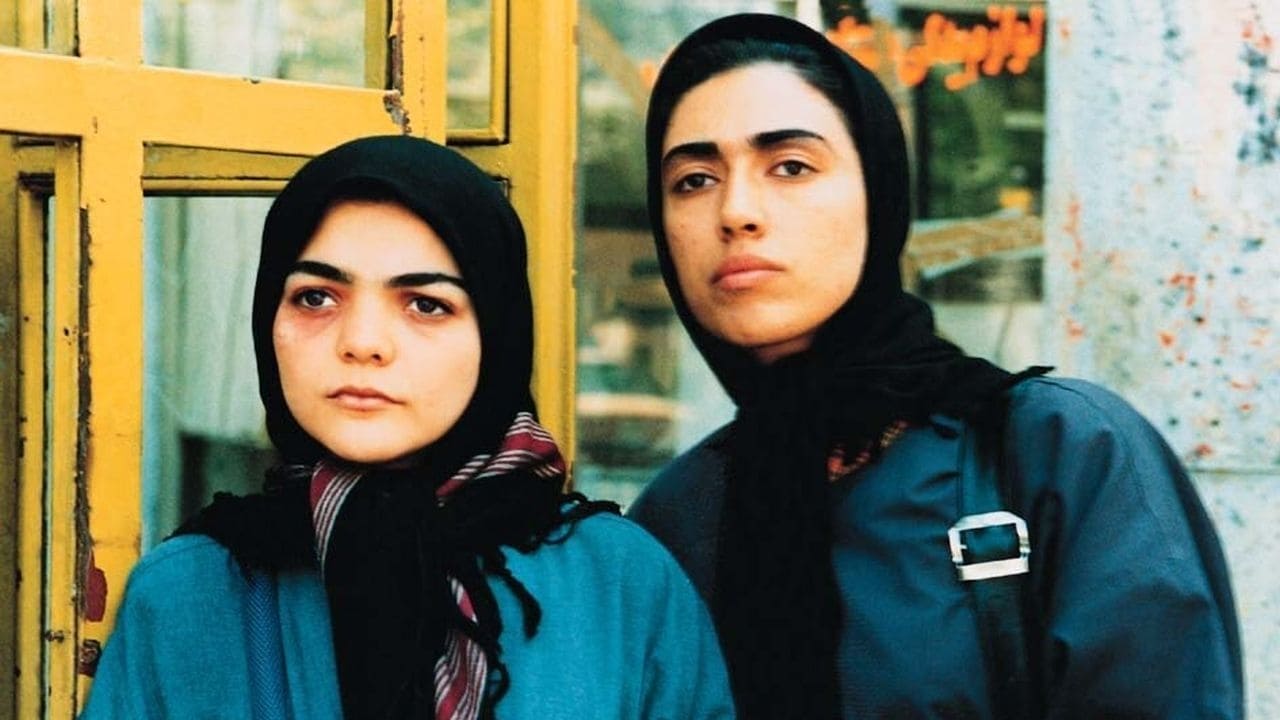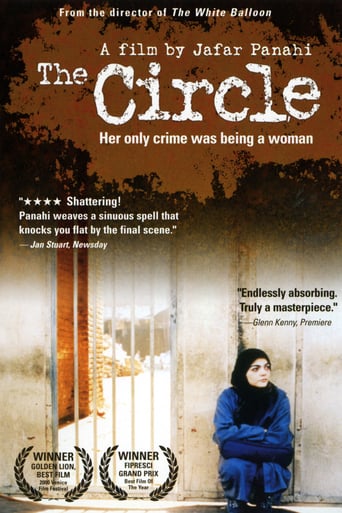

Iranian director Jafar Panahi's Golden Lion winner of 2000, "Dayereh", is a critical and extremely powerful film about women who suffer from the injustices of the laws of the Islamic Republic.As an atheist I support no religions, and I do not think one is better or more respectful to human lives than any other. "Dayereh" is a film that is concerned with religion only as far as it is a film that takes place in Iran, a country where Islamic Law dominates or even rules over the secular law. I am not an expert on Iranian law, but I do hold "Dayereh" to be the TRUTH, not a propaganda fiction of no concern to reality. Therefore, I admire Iranian directors who constantly produce magnificent films although they have to battle against censorship and the strict rule of the Ayatollah. This perhaps forces filmmakers to adapt a more poetic film semiotics, perhaps only suggesting cruelty and injustice, not showing it directly like Western directors are allowed to do.Like Mohsen Makhmalbaf and Abbas Kiarostami before him, Jafar Panahi has succeeded in producing a small, but superb film. Kambuzia Partovi's script is great, linking the misfortune and fates of several young Iranian women together into a whole narrative. All four or five women (one is not as thoroughly described) have committed unlawful acts, but their crimes are not explicitly stated in the dialogue of the film. However, we understand that their crimes would not be considered near a crime in most other countries, because it is related to sex and female independence, not to real criminality. Bahram Badakshani's camera is always close to the women, and their acting is nothing less than brilliant. The tracking movement of the camera and the shots composed by a hand-held camera result in many long takes, where the actresses get to show their skill wihtout editing. This is also a marvellous success for the director Panahi.This film also contains a subtle symbolic factor, namely the wish for several of the women to smoke a cigarette. Different interruptions and laws concerning females and cigarettes prevent the women to smoke until one of the last scenes, when a women is arrested for travelling alone in a car with a man to whom she is not married (prostitution?). When a male prisoner is lighting up his cigarette, the woman does the same, and this time no one stops her. The smoking of the cigarette is not a symbol of freedom, because all the young women end up back in prison, but the cigarette does create a symbol of escape, although it is an escape from society, and not from the persecution of women who act like human beings (in Iran, read men). The smoking becomes Virginia Woolf's room of their own, the escape from a society that does not want them to be free.
... View MoreA potent movie, portraying much that is now common knowledge among informed westerners. What was very significant to me was the emotional response it was able to elicit in me despite my prior knowlege of the place women have in many muslim countries. Not only a combination of frustration, anger and despair at the gross injustice perpetrated against women, but the pervasive tension and paranoia generated by a police state.I thank my lucky stars that I live in the West, with all its foibles.
... View MoreThe "circle" in Jafar Panahi's great film is many things: thestructure of the film itself, which ends with the same image itbegins with; a location in Teheran, where a character meets afriend in a movie theater; the circular stairs so many othercharacters run up and down; the circling, hovering cameramovements that bring us face to face with the women in theseinterlinked stories and the world they are caught in. Most of all,perhaps, it is the constricting circle within which Iranian womenmust live their lives, the tightly circumscribed rules andexpectations of a rigidly masculine universe. None of Panahi'scharacters can escape this circle, though some try and one, atleast, believes that she can. The more experienced know the truth;all they can do in running is map out the circumference of theirshrunken world.It's easy to see The Circle as a film about the oppression ofwomen in Iran, but that would reduce it to the merely political--andwe should not forget that the film was made by an Iranian man,and that three quarters of the Iranian electorate recently voted toreelect President Khatami, a deeply intelligent voice for freedomand dialogue who has had his own difficulties being heard.Panahi's subject is far larger; a woman who grew up in an abusivehousehold told me that no other film had so accurately depictedthe experience of her youth, when the constraints on women'slives were so much taken for granted that she was unaware therewas anything outside them. But those constraints are fatal. Wemake our world together, through dialogue and interaction. Todeprive someone of voice and the chance to participate in thatprocess is to kill them, whether it is done through religious andsocial sanctions or by a husband beating his wife. Panahi'swomen are neither dead nor silent, even though their onlylisteners are other women. Their tragedy finds echoes everywhere;but in this film where theme and expression are so intimatelyjoined we, at least, can hear them.
... View MoreIn Jafar Panahi's claustral feature debut, the brilliant central conceit is that being a woman in Iran is exactly equivalent to being the Wrong Man in an Alfred Hitchcock movie. In the movie's nameless Iranian city, the narrative baton is handed off from one woman to another, each of them missing an ID card, a chaperoning male, some form of social validation; without it, the long arm of the law winds around each woman like a python. Panahi's style--long, fluid takes that are at once bruisingly verite and dreamlike--buckles in the script's ingenious (and perhaps unconscious) major device: in this movie, women are a secret underworld with nodding, unspoken signals, just like hoodlums silently acknowledging one another in a gangster picture. There is no warm-hug sisterhood here, just the desperate mutual regard of the about-to-be-caught.The honesty and unfussiness of the style of contemporary Iranian directors enables them to get away with stuff other artists might not, such as the ending of this movie, which, in a European or American movie, might seem thuddingly unsubtle. Here, it seems like the fulfillment of a nightmare--and it works because of Panahi's wittily blunt style, which is pitched somewhere between Iranian neorealism and Elaine May's MIKEY AND NICKY. And it works because of our constant recognition of the literal, physical courage of the movie: our glimpses of current state attitudes toward abortion, prostitution and corrupt police are so bald one marvels at Panahi's (and the cast and crew's) effrontery. Never has chador seemed less exotic and more evil--a manifestation of a terror of the beauty and pleasure of the female body that seems to engulf each character like a Cronenbergian plague. (The movie's wittiest touch is Cronenbergian, too: a woman character has a tic that gives her away to the cops--pregnancy-induced vomiting.)
... View More